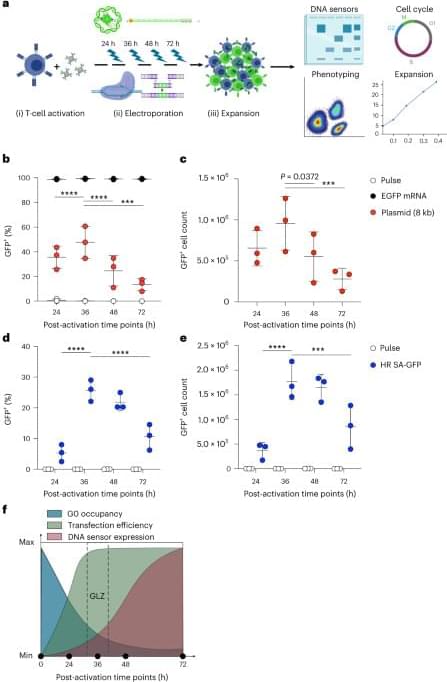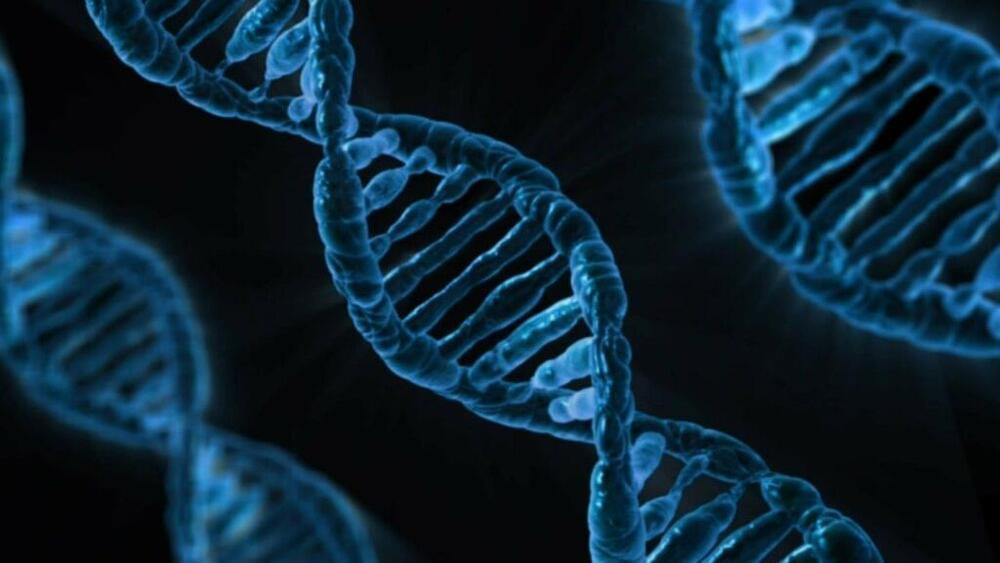The targeted integration of large DNA payloads into primary human T cells can be efficiently achieved non-virally by leveraging Cas9-based editing and the DNA-repair pathway homology-mediated end joining.
Brain transplant is not a reality for humans or for any living organism. But there are human research experiments in which transplanted brain cells are used to help treat several diseases that affect the brain. So far, there are very few results and measured outcomes of brain cell transplant, but the concept of transplanting brain tissue has shown some promise in preliminary studies.
If you are interested in having a brain cell transplant procedure, you can talk to your healthcare provider and look for a university or research center where brain cell transplant procedures are being done. These procedures tend to be part of research studies, so you will likely need to enroll in a research study if you want to have this type of treatment.
The brain is composed of many different regions and cells. Neurons in the brain have dedicated functions, and they do not typically heal when they are damaged. Parkinson’s disease, stroke, multiple sclerosis (MS), epilepsy, Alzheimer’s disease, and head trauma are among the conditions for which brain cell transplant has been used for humans in an experimental setting.
Scientists have discovered that bacteria can form memory-like mechanisms, informing strategies that lead to dangerous infections in humans. These strategies include antibiotic resistance and the formation…
A recent analysis of a peculiar pair of galaxies located billions of light-years away suggests the possibility of a cosmic string —a hypothetical feature in the fabric of the Universe. Initially considered distinct, the two galaxies may be duplicated images caused by gravitational lensing, a phenomenon where space-time bends around foreground mass, acting like a lens.
Led by researchers of the Indian Institute of Astrophysics, the study identifies a cosmic string candidate, CSc-1, in the cosmic microwave background, the lingering radiation from the Universe’s birth. Cosmic strings, theoretical one-dimensional wrinkles formed at the dawn of time, are believed to be highly dense and massive, potentially extending across the entire Universe.
Observationally proving cosmic strings is challenging because their effects can resemble other phenomena. However, minute differences in their impact distinguish them. The researchers focused on a galaxy pair, SDSSJ110429, within CSc-1 as a potential cosmic string signature. Gravitational lensing typically involves a foreground mass causing observable distortions, but SDSSJ110429 lacks evident foreground mass or distorted light.
The Chinese military has been escalating its cyber capabilities, posing a potential threat to key American infrastructure. This includes power and water utilities, as well as communication and transportation systems. Over the past year, hackers affiliated with China’s People’s Liberation Army have successfully infiltrated the computer systems of approximately two dozen critical entities.
These cyber intrusions are not isolated incidents. They are part of a broader strategy to develop methods that could cause panic, chaos, or disrupt logistics in the event of a U.S.-China conflict. The victims of these cyber-attacks include a water utility in Hawaii, a major West Coast port, and at least one oil and gas pipeline. There was also an attempt to breach the operator of Texas’s power grid.
Takeaways:
• The Chinese military is reportedly increasing its attempts to infiltrate essential infrastructure, utilities, communication, and transportation services in the U.S., according to anonymous U.S. officials and cybersecurity experts.
• Hackers linked with China’s People’s Liberation Army have infiltrated around two dozen essential service entities in the past year, including a water utility in Hawaii, an oil and gas pipeline, and a West Coast port.
Artificial intelligence researchers claim to have made the world’s first scientific discovery using a large language model, a breakthrough that suggests the technology behind ChatGPT and similar programs can generate information that goes beyond human knowledge.
The finding emerged from Google DeepMind, where scientists are investigating whether large language models, which underpin modern chatbots such as OpenAI’s ChatGPT and Google’s Bard, can do more than repackage information learned in training and come up with new insights.
“When we started the project there was no indication that it would produce something that’s genuinely new,” said Pushmeet Kohli, the head of AI for science at DeepMind. “As far as we know, this is the first time that a genuine, new scientific discovery has been made by a large language model.”
Twenty-four years ago, Ray Kurzweil predicted computers would reach human-level intelligence by 2029. This was met with great concern and criticism. In the past six months technology experts have come around to agree with him. According to Kurzweil, over the next two decades, AI is going to change what it means to be human. We are going to invent new means of expression that will soar past human language, art, and science of today. All of the concepts that we rely on to give meaning to our lives, including death itself, will be transformed.\
\
Speakers:\
Ray Kurzweil\
Inventor, Futurist \& Best-selling author of ‘The Singularity is Near’\
\
Reinhard Scholl\
Deputy Director, Telecommunication Standardization Bureau\
International Telecommunication Union (ITU)\
Co-founder and Managing Director, AI for Good\
\
The AI for Good Global Summit is the leading action-oriented United Nations platform promoting AI to advance health, climate, gender, inclusive prosperity, sustainable infrastructure, and other global development priorities. AI for Good is organized by the International Telecommunication Union (ITU) – the UN specialized agency for information and communication technology – in partnership with 40 UN sister agencies and co-convened with the government of Switzerland.\
\
Join the Neural Network!\
👉https://aiforgood.itu.int/neural-netw…\
The AI for Good networking community platform powered by AI. \
Designed to help users build connections with innovators and experts, link innovative ideas with social impact opportunities, and bring the community together to advance the SDGs using AI.\
\
🔴 Watch the latest #AIforGood videos!\
/ aiforgood \
\
📩 Stay updated and join our weekly AI for Good newsletter:\
http://eepurl.com/gI2kJ5\
\
🗞Check out the latest AI for Good news:\
https://aiforgood.itu.int/newsroom/\
\
📱Explore the AI for Good blog:\
https://aiforgood.itu.int/ai-for-good…\
\
🌎 Connect on our social media:\
Website: https://aiforgood.itu.int/\
Twitter: / aiforgood \
LinkedIn Page: / 26,511,907 \
LinkedIn Group: / 8,567,748 \
Instagram: / aiforgood \
Facebook: / aiforgood \
\
What is AI for Good?\
We have less than 10 years to solve the UN SDGs and AI holds great promise to advance many of the sustainable development goals and targets.\
More than a Summit, more than a movement, AI for Good is presented as a year round digital platform where AI innovators and problem owners learn, build and connect to help identify practical AI solutions to advance the United Nations Sustainable Development Goals.\
AI for Good is organized by ITU in partnership with 40 UN Sister Agencies and co-convened with Switzerland.\
\
Disclaimer:\
The views and opinions expressed are those of the panelists and do not reflect the official policy of the ITU.









